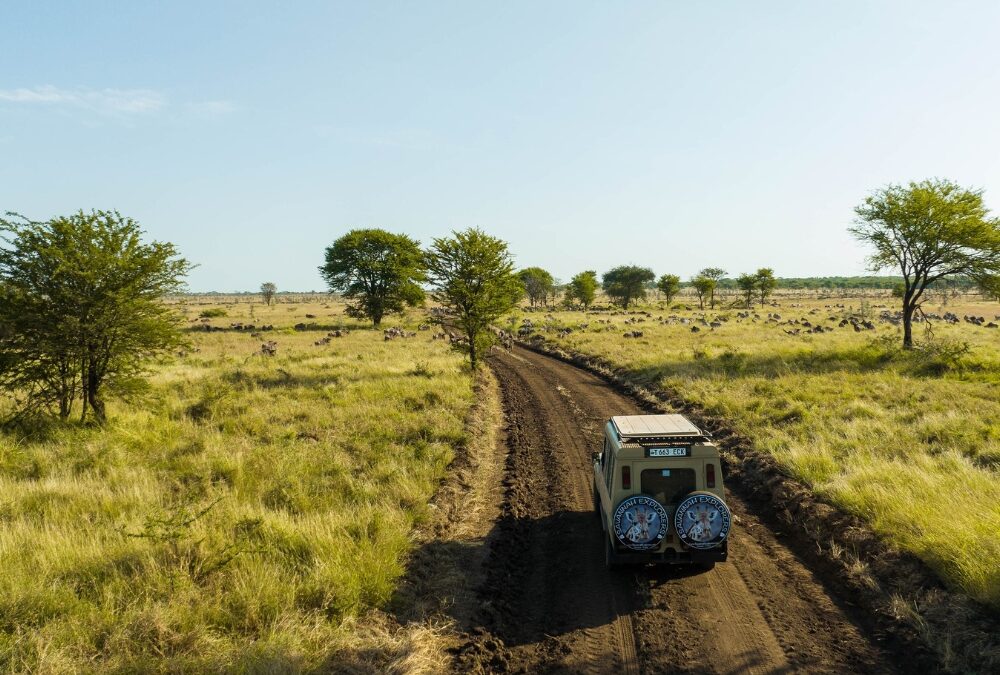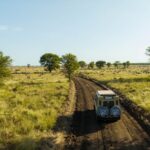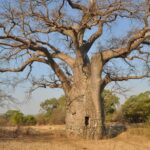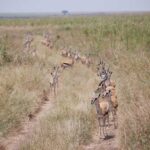Tanzania is one of the most sought-after destinations for safari and adventure lovers.
To fully enjoy the stunning national parks, Mount Kilimanjaro, and the dreamy beaches of the Zanzibar archipelago, it’s essential to consider how the climate changes across different seasons.
In this travel guide, we outline Tanzania’s climate month by month, both in the national parks and in the Zanzibar archipelago.
What Are Tanzania’s Climate Zones?
Tanzania’s climate is as diverse as its landscapes.
From the cool highlands to the sweltering coastal plains, the country’s geography creates a variety of weather patterns.
- Coastal Areas & Islands (including Zanzibar): Tropical, humid, and hot year-round but with a distinct wet and dry season.
- Plateau & Inland Areas (like Serengeti): Semi-arid with significant temperature swings between day and night.
- Highlands (including Kilimanjaro and Ngorongoro): Cool and temperate, with colder temperatures at higher altitudes.
Each zone adds a layer of nuance to the Tanzania climate, making it vital to consider your destination when planning.
The Dry Season in Tanzania
The dry season runs from June to October, coinciding with some of the best times to visit Tanzania.
During this period, rainfall is scarce, the skies remain clear, and temperatures are generally comfortable.
Conditions to expect during the dry season
- Safari-ready landscapes: Grass is shorter, making wildlife easier to spot.
- Cool nights, warm days: Average daytime temperatures range from 77–86°F (25–30°C), cooling down significantly at night, especially in higher-altitude areas.
- Perfect for Kilimanjaro climbing: Minimal rainfall means safer trekking conditions.
Best Activities During Dry Season
- Witnessing the Wildebeest Migration in the Serengeti.
- Climbing Kilimanjaro, with clearer skies and more stable weather.
- Relaxing in Zanzibar with limited rain and pleasant temperatures.
The Wet Season in Tanzania
Tanzania’s wet season is divided into two parts.
- Short Rains (November to December): Rainfall is brief and sporadic, often making mornings sunny with occasional afternoon showers. It’s a quieter time for tourism but still perfect for visiting many areas.
- Long Rains (March to May): This is Tanzania’s true rainy season, with heavy rains that can last several hours. Roads in national parks may become muddy, making access to remote safari destinations more challenging.
Conditions to expect during the wet season
- Vibrant greenery and lush landscapes.
- Wildlife disperses due to ample water sources, making spotting animals slightly trickier.
- Reduced prices on tours and accommodations, as it’s considered the off-peak season.
Best Activities During Wet Season
- Birdwatching is phenomenal as migratory birds arrive during the rains.
- A quiet safari experience without large tourist crowds.
Average Monthly Rainfall & Temperatures in Tanzania
Here’s a month-by-month breakdown of Tanzania’s climate.
January & February
- Average Temp: 70–88°F (21–31°C)
- Less rain compared to March; wildlife viewing still good
March to May (Long Rains)
- Average Temp: 66–84°F (19–29°C)
- Heavy rain but stunning landscapes for photography
June to October (Dry Season)
- Average Temp: 63–81°F (17–27°C)
- Peak safari season; excellent visibility for wildlife
November & December (Short Rains)
- Average Temp: 68–86°F (20–30°C)
- Scattered showers, vibrant vegetation, and fewer visitors
Best Time to Visit Tanzania
The best time to visit Tanzania depends on the activities you want to enjoy.
- Safari & Wildlife Viewing: June to October offers the best conditions for game drives, as animals gather around limited waterholes.
- Kilometers of Beaches: Zanzibar is idyllic during January to February or June to October, when rainfall is minimal, and skies are clear.
The Best Time to See the Great Wildebeest Migration
One of the largest wildlife phenomena in the world, the Great Wildebeest Migration, is a year-round spectacle in the Serengeti.
Here’s how the migration aligns with Tanzania’s climate:
- January to March – Calving season in the southern Serengeti. Thousands of baby wildebeests are born, attracting predators.
- May to July – Wildebeests move northward and begin the dramatic river crossing.
- July to September – Best time to witness the thrilling Mara River crossing as herds move into the Masai Mara in Kenya.
- October to December – Wildebeest herds migrate back to the Serengeti.
If the migration is the highlight of your trip, plan strategically based on the time of year and the location of the herds.
Best Time to Climb Kilimanjaro
For adventure seekers and trekking enthusiasts, one of the most exciting challenges in Tanzania is climbing Mount Kilimanjaro.
The best time for trekking is during the dry season (from January to March and from June to October).
During these months, the weather is more stable with minimal risk of rain, making the climb safer and more enjoyable.
At higher altitudes, however, be prepared for very cold temperatures, especially at night.
Important: avoid April and May, when the rainy season can make the trails slippery and dangerous.
Best Time to Visit Zanzibar
After exploring the parks, Zanzibar is the perfect destination to relax.
The climate in Zanzibar is hot and humid year-round, but the dry season (June to October) is ideal for enjoying the breathtaking beaches and crystal-clear waters.
The months between November and December are marked by short rains, but the sun doesn’t stay away for too long.
However, be aware of the long rainy season (March to May), as the rains can be more intense and continuous.
Many resorts offer promotions during this period, making it an interesting option for those looking for a more budget-friendly experience.








